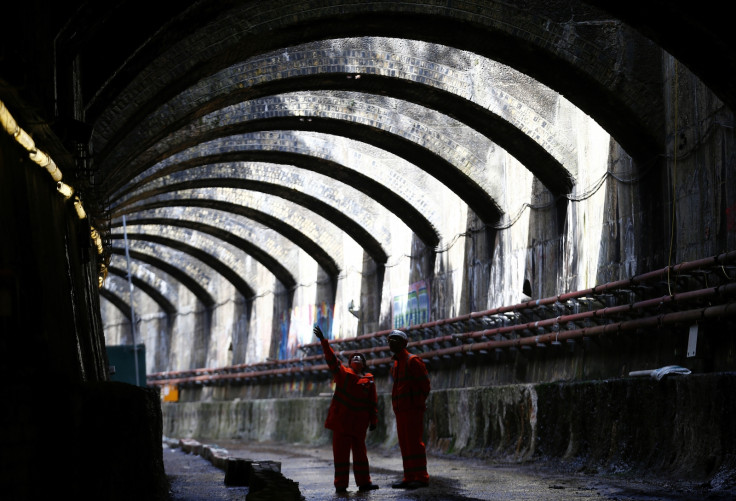How infrastructure investing has become mainstream
Pension funds and insurers are attracted to investing in infrastructure that can offer long term and stable returns.

Infrastructure has developed from a niche corner of the bank and capital markets some thirty years ago to now become a mainstream topic. Today, joining the banks who have always been a mainstay in this market, pension funds and insurance companies are also now attracted to this maturing asset class that can offer long term and stable returns.
Investors are dedicating more funds, away from traditional equities and corporate or government bonds, to infrastructure through equity and bond fund managers committed to the sphere, as well as through direct investments. Additionally, politicians around the world are promising to address and invest more in ageing infrastructure and use it as a public policy tool to create growth.
We can point to many steps that have led the infrastructure market to where we see it today. In the UK, the great Victorian civil engineers such as Isambard Kingdom Brunel and Sir Joseph William Bazalgette were part of an era that developed key infrastructure including the railways as well as the water and sewer networks around the globe - all of which still remain essential assets.
Similar to today, those great projects were financed with bonds bought by individuals expecting high returns. However, high returns can also mean higher risks. Some of these projects faced massive construction overruns and delays and were premised on assumed rapid take up in utilisation and inflation-linked price increases.
Despite these issues, projects which became essential, such as the Suez Canal in 1869 and the Panama Canal in 1914, were finally completed initially with private funding and subsequently with funding from governments.
If we then fast forward to the late 20th century, there were two things that the UK government did during this period that helped develop today's infrastructure market – privatising utilities and developing the private finance initiative (PFI).
Privatisation set up a strong regulated asset base for electricity, water, gas, transmission lines and airport businesses to raise private finance through both debt and equity. This developed new infrastructure equity players and created a new infrastructure sector for the long term bond and active bank market. As a result, the UK was able to build many schools, hospitals, prisons, and other public sector assets to the benefit of the economy and society.
In the mid-1990s, in the wake of demand for diversity and stable investments from pension schemes in Australia, domestic banks there then entered the infrastructure market. Most notably Macquarie launched its flagship listed fund (Macquarie Infrastructure Group), to export infrastructure asset management and investment globally over a 20 year period. This provided the requisite investment characteristics in principle to help develop infrastructure as a dedicated asset class in global portfolios.
Moving closer to today, the global financial crisis of 2008 had a further formative influence on the infrastructure finance market we now know. Just before the crisis began, a number of infrastructure assets were bought at many multiples of earnings and were also highly leveraged with debt. Short term investors expected to make high returns on a sale or refinancing within two to three years.
A number were successful in doing so but post 2008 there were also some assets that needed to undergo debt restructuring. This meant that there were deals where the short term equity and debt investors lost most or part of their investment.
At the same time, many infrastructure long term bondholders were not able to divest in time and instead they held on to their investments through this crisis. These bonds actually turned out to be one of the safest parts of their investment portfolios. Thus arose the concept of infrastructure as a safe haven.
Shortly after the crisis there emerged numerous new infrastructure equity and debt platforms or funds, all seeking either to refinance current assets or fund new assets. These platforms are long term lenders, having learnt from their experiences during the crisis that even infrastructure assets must endure the inevitable business cycles that these assets can be exposed to.
Infrastructure players have also developed a better understanding of the various operational risks throughout the life of an asset. New categories such as "economic infrastructure" and "social infrastructure" now exist. The latter likely to benefit from an availability payment from a government entity, while the former is reliant upon "user pays" (i.e. tolls).
The definition of infrastructure has also now developed in legal and regulatory frameworks such as Solvency II, where the regulation for insurance capital defines "essential infrastructure", the banking regulations of Basel 3 and upcoming Basel 4 which will also aim to define infrastructure, and in the Base Erosion and Profit sharing legislation which uses the definition of "public benefit assets". These regulations all attempt to capture what is now designated as a separate "infrastructure asset class".
In conclusion, the demand for infrastructure assets has grown significantly and with that growth we have seen greater market participation and added regulations. We are also now seeing the infrastructure equity and debt platforms spreading their wings and starting to invest further afield in emerging market infrastructure assets as was seen in the 19th century.
Ian Dixon is Managing Director and Analytical Head of the EMEA Infrastructure & Project Finance group at Fitch Ratings.
© Copyright IBTimes 2025. All rights reserved.






















